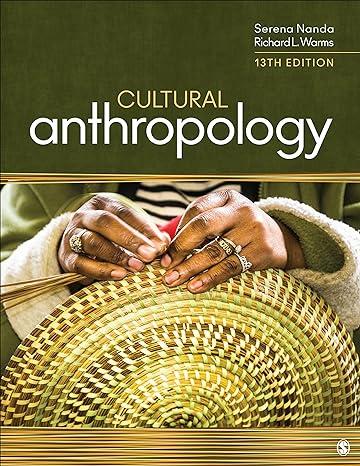Two other important symbols of Rastafarian culture are ganja (marijuana) and the use of a special vocabulary.
Question:
Two other important symbols of Rastafarian culture are ganja (marijuana) and the use of a special vocabulary. The use of ganja has been common on Jamaican agricultural estates since the turn of the 20th century and is part of Jamaican workingclass life. Although it was illegal, the upper classes approved it because it acted as a stimulant and an incentive to work. Rastafari, however, have reversed these meanings. To them, ganja became a tool of illumination to be used at "reasoning sessions," where they gather to interpret biblical passages and share beliefs about freedom, slavery, colonialism, and racism. Ganja, they believe, allows them to see through the evils of the bourgeois world, understand the roots of their oppression, and verify the authenticity of the Rasta lifestyle. Thus, whereas the traditional use of ganja in Jamaica supported the dominant society, Rasta use subverts it. The Jamaican government decriminalized possession of up to two ounces of marijuana in 2015. The same law specifically allows Rastafarians to use it for religious purposes.
The sale of ganja, both legal and illegal, is part of the economy of many Rasta groups. As with other aspects of Rasta economy, the networks for growing, preparing, and distributing ganja are based on friendship, alliances, and reciprocity. Although the Rastas have encountered difficulties with law enforcement, ganja has provided them with a livelihood that allows them independence and freedom from the capitalist system, a position they value highly. Ultimately, many Rastafarians hope that their world will become more and more based on reciprocity and redistribution and that money as a medium of exchange will disappear from their community.
Rastafarian linguistic usages include the invention of I-centered words, phrases, and suffixes, such as ital for vital, and the replacement of such diminutive prefixes as under- and sub- by their opposites. For example, understand is rendered overstand. For Rastas, the use of I-centered words focuses attention on the radical equality of all people and their identity with God. As one said, "Who is you? There is no you. There is only \(\mathrm{I}, \mathrm{I}\), and \(\mathrm{I}\). \(\mathrm{I}\) i s you, \(\mathrm{I}\) is God, I is I.... We are all each other and one with God because it is the same life energy that flows within all of us" (in Homiak, 1998, p. 167).
From their founding until the 1970s, Rastas faced discrimination and resistance in Jamaica. This included confrontations between Rastas and the police in 1958, 1959, and 1960, as well as an attack on the Rasta community at Coral Gardens in 1963 that claimed eight lives and led to the arrest of more than 150 people. However, beginning in the 1970s, because of the popularity of reggae stars such as Bob Marley, Peter Tosh, Jimmy Cliff, and Burning Spear, the government began to promote reggae music and Rasta styles as part of Jamaica's cultural heritage. It promoted reggae music festivals such as Reggae Sunsplash and its successor, Reggae Sumfest (https://www.reggaesumfest.com/). Government and music industry officials have even considered trying to control the reggae brand through the creation of an official "authentic reggae" designation (Associated Press, 2015).
In 2017, the Jamaican government officially apologized for the Coral Gardens attack and offered reparations in the form of a trust fund and land (Wilkinson, 2017). And in 2018, UNESCO designated reggae an "Intangible Cultural Heritage." Many Rastafarians still consider their lifestyle as a form of resistance, but the increasing linkage between Rastafarians and the Jamaican government has led to their decline as a political and social force (King, 2002; King \& Foster, 2001).
Critical Thinking Questions
1. The Rasta movement arose in Jamaica but has gained enormous popularity worldwide. What sorts of people are likely to be attracted to the Rasta message, and what elements of that message are likely to be particularly appealing to them?
2. Rastafarians are probably better known worldwide for their association with reggae music than with specific religious beliefs. Consider a reggae song by a major artist such as Bob Marley, Burning Spear, or Peter Tosh (do some research if you are not familiar with any of these artists). How do the lyrics reflect Rasta religious belief?
3. There are many new religions in the United States. Are any of them similar to the Rasta movement? If so, in what ways are they similar?
Step by Step Answer:






